Recycled Water is “Drought Resistant” meaning you can use as much of it as you want as long as you know where to get it and how to transport it.
If you have a vehicle, you can haul recycled water from a treatment plant to your home and use it to irrigate your landscape – like lawns, flower gardens, trees, vegetable plants; or use it to make concrete or for dust control or re-filling your recirculating fountain or for flushing your toilets! Recycled water is perfect for anything that needs water but won’t be used for drinking by pets or humans.
Once you’ve established interest in hauling recycled water – there are three things you need to know before diving in.
- Vehicle to transport recycled water with
- Container include pump, hoses and lawn sprinklers
- Motivation! It takes time & energy to haul water, time to drive to and from fill stations, to fill up and unload at home. Committing to doing this on a daily or weekly basis determines how much you want to invest in it.
There is no cookie cutter solution yet, just simple principles that everyone has followed.

Source: Consumerreports.org
First – Water is heavy!
A gallon of water weighs 8.34 pounds. So 10 gallons weighs 83.4 pounds, 100 gallons weighs 834 pounds, 200 gallons weighs 1668 pounds, 300 gallons weighs 2502 pounds.
Why does this matter? If you’re going to transport it, you need to use a vehicle that can handle the weight.
Gross Vehicle Weight – Curb Weight = Cargo (Payload) Weight

Total gross vehicle weight minus (your weight + weight of empty tanks) equals Cargo (payload) weight
Sedans
What do you drive? A sedan? It can hold 850 pounds total. Subtract your weight and the weight of everything you added to the car, then subtract that from your total and you’ll figure out how much water weight you can transport. For most people with a clutter-free car, that could be ~ 600 pounds.
600 pounds is 72 gallons of water.
Mini-Vans
If you’re a parent with a mini-van – used to move your kids around to schools, baseball/soccer practice you know you can fit 8 people in your vehicle. Did you know it has a cargo capacity of around 1200 pounds? Much like the math we did above, you could probably put about 1,000 pounds of water in the van.
1,000 pounds is 120 gallons of water.
SUV’s
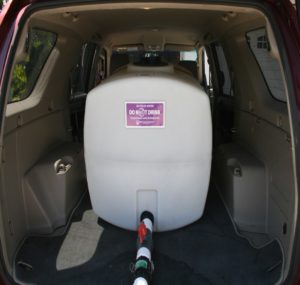
Credit: waterboards.ca.gov
SUV’s are everywhere and sadly the stats for its cargo weight are not. For this we subtract a vehicles Gross Vehicle Weight from its Curb Weight to find its Cargo Weight.
If we take the top recommended SUV for 2016, we find the Toyota Highlander is one of them. The LE version of that vehicle has a cargo capacity weight of 1,531 pounds. Subtract out your weight and any “stuff” you have in the vehicle and you find you can haul ~ 1300 pounds of water.
1300 pounds is 156 gallons of water.
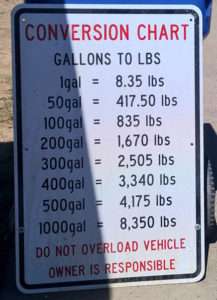
(source: City of Brentwood)
Pick-up Trucks
If you’ve seen any one hauling water, its usually in a pickup truck with a large IBC tote in the back. Pickup trucks are generally the vehicle of choice. I drive a Ram 1500 which has a payload capacity of 1250 pounds (my truck has airbags for automatic ride leveling and my limit on total weight).
Generally pickup trucks can carry ~ 1500 pounds. The 3/4 ton (F-250, 2500 series) or 1-Ton (F-350, 3500 series) can hold more than 2,000 to 3,500 pounds of weight. Please refer to the owners manual for your vehicle for payload capacities.
Lets take an 2016 F-150 for example which can hold 2,800 pounds payload, minus the driver and some gear (300 pounds) – 2,500 pounds.
2,500 pounds is 300 gallons of water. (Also the max volume a fill station is allowed to give away, per trip.)
Trailers
Trailers are always an option if you have a trailer hitch on your vehicle. I’ve found, for SUV’s and some pickup trucks, owners would much rather tow a trailer than stick a big tank in the cargo area of the vehicle. Any trailer hauling a tank should be capable of holding the necessary weight. An empty 275 IBC tote weighs ~ 120-140 pounds, when full it’s combined weight is 2400 pounds.
I spoke with one of the sales guys at the local trailer shop and he recommended not buying a 6 foot trailer as trailer sway get ridiculous on the freeway. He recommended an 8 foot or a 10 foot utility trailer instead. Also, trailer brakes are not required but very helpful when trying to slow down such a heavy load. The other options I’ve seen are open top car trailers, they’re long but get the job done.
You can always go with water tank trailers such as an ABI Kiser Water tank trailer, just ensure you get a D.O.T. approved trailer in a volume fit for your fill station. Cost on these trailers tends to be ~ $4k+.
Tanks!
Once you figure out how much weight your vehicle can carry, you can also figure out how much water you can haul. Now lets look at tanks that meet your needs.
For a sedan with trunk space, a few 6 gallon containers might be your container of choice. They have resealable lids (a requirement at all fill stations), and can reduce the risk of spilling water in your trunk.
A 6-gallon jug will weigh 50 pounds when full. They also cost ~ $12.97.
If you’re going this route, you’ll need 12 of them to meet your vehicle capacity, but ask yourself, what is your need? If you live in a condo and want to use recycled water to water your potted plants, you may only need 2-3 of these. If you want to use recycled water to flush your toilets, you might also only need 2-3.
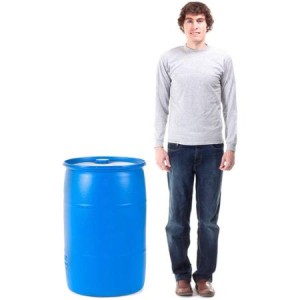 Lets say a blue water barrel is more up your alley. This one pictured is a 30 gallon water barrel (next to a person for size comparison – courtesy of Walmart). This barrel is $61.39 and will weigh 250 pounds when full.
Lets say a blue water barrel is more up your alley. This one pictured is a 30 gallon water barrel (next to a person for size comparison – courtesy of Walmart). This barrel is $61.39 and will weigh 250 pounds when full.
The key point in this case is you won’t be able to move it from your vehicle when it is full so keep in mind when you buy for how you will unload the water from the tank (more on this later).

Source: Plastic-mart.com
Maybe price is not important to you, but ease-of-use and function is. The sky is the limit.
At Plastic-Mart.com you can buy a 32 gallon rectangle poly tank for $319.99. They can also install any fittings you need – important when you consider how you will unload the water from the tank.
If you have a vehicle that can transport 150 gallons, options begin to change. You could do two to three 55 gallon drums or my choice is a 150 gallon water pillow. I put mine in the bed of my pickup truck.
This pillow is a called an Aquatank II and costs $199.99, it comes with fittings for hoses already and when its empty, it folds up into the same space as a 3-ring binder. The only drawback is there is setup involved each time you want to fill up or unload water and the fill station needs to have threaded fittings on the ends of the hoses.
The 55 gallon drum option is shown in the picture above.
The most popular option that people choose is the 275 gallon caged IBC tote. You can generally find these tanks locally or on Craigslist.org for much cheaper than Homedepot which will sell them at full price for ~ $299.
One of our most popular articles is a complete setup to filling to unloading article titled “Hauling 275 gallons of recycled water with an IBC tote” which will walk you through everything you need to do and get, if the IBC tote is your container.
There are plenty of other options available, your imagination is the limit – just remember – get a container that fits your vehicle capacity limits and your watering needs.
Pumps!
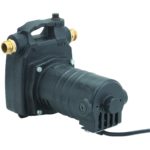 The most common pump I’ve seen is the Pacific Hydrostar 1500 gallon per hour utility pump from HarborFreight.com. It sells for $79.99 (but couple this with their 20% coupons that come in the mail) and you can easily acquire this strong pump for ~ $64. An excellent deal!
The most common pump I’ve seen is the Pacific Hydrostar 1500 gallon per hour utility pump from HarborFreight.com. It sells for $79.99 (but couple this with their 20% coupons that come in the mail) and you can easily acquire this strong pump for ~ $64. An excellent deal!
This pump has been connected to IBC Totes, Aquatank II water pillows and 55 gallon drums.
An article was also written – “Pumps for unloading recycled water” – it lists 5 of the most common pumps people use to unload water.
For the more technical crowd, using old pool pumps have also been a pump of choice. People are quick to unload an old pool pump for free, and as long as you have the technical know how to wire it up for your needs, it becomes a perfect option. They pump a high volume of water quickly.

Everbilt pump used in “Oakley Resident Conserves 30% on Water Bill…“
Putting it all together…
Now comes the age old question and one asked by Catharine Baker, Assemblywoman from the 16th Assembly District in California. “How do you unload recycled water from the tank once you get it home?”
The above video shows it best – if you’re unloading from a tote.
This same procedure for unloading was also used in the hauling water above. For smaller tanks – “Hand watering with recycled water” might be your best avenue. I learned a few months later the pump I was using was under-powered so I upgrade it to a higher flow rate pump in “Tips & Tricks To Unload Recycled Water More Efficiently.”
Basically – if you’ve gone so far to buy a tank for your vehicle, you probably have a mechanical mindset to figuring out how to hook it all up. The two previously mentioned articles provide adequate information for unloading your tanks. If you have any questions, ask in the comments or on our Facebook page – facebook.com/RecycledH2O
Where can I pickup Free Recycled Water?
Once a residential recycled water fill station opens near you, it is your decision to get the equipment you need to haul. RecycledH2O keeps track area fill stations for you.
Disclaimer – You can always put more load in your vehicle than is recommended by the manufacturer. I choose not to, but you can if you would like. If your truck is rated for 1200 pounds and you want to load it with 2500 pounds, that is on you. I will not be held responsible for your actions. Honestly – you won’t be the first one, I see very small trucks come in all the time and load up a tote with 2500 pounds of water. When they drive off, their truck bed is so low you are unable to see the top of the wheels in the back. Plus their turning capability has greatly been reduced as the front wheels barely touch the ground. Please be safe and responsible.
This page was updated on October 5, 2016. The original version of this page is here.


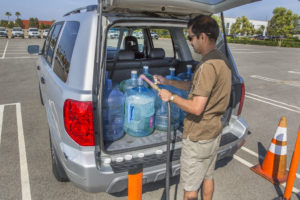
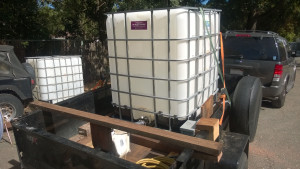
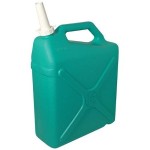
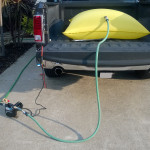


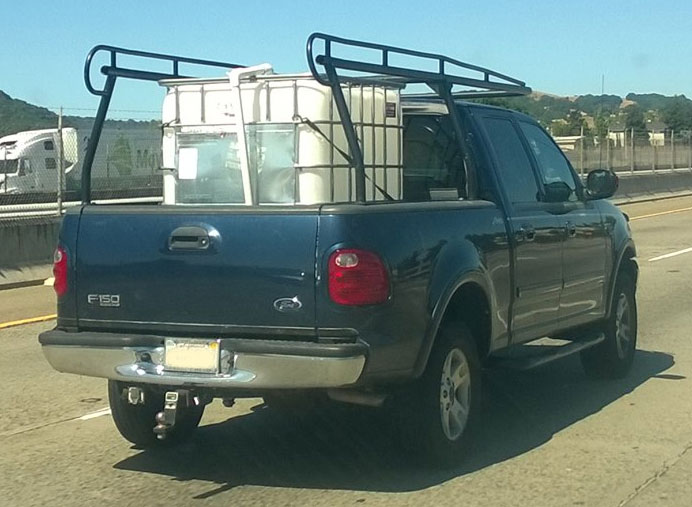
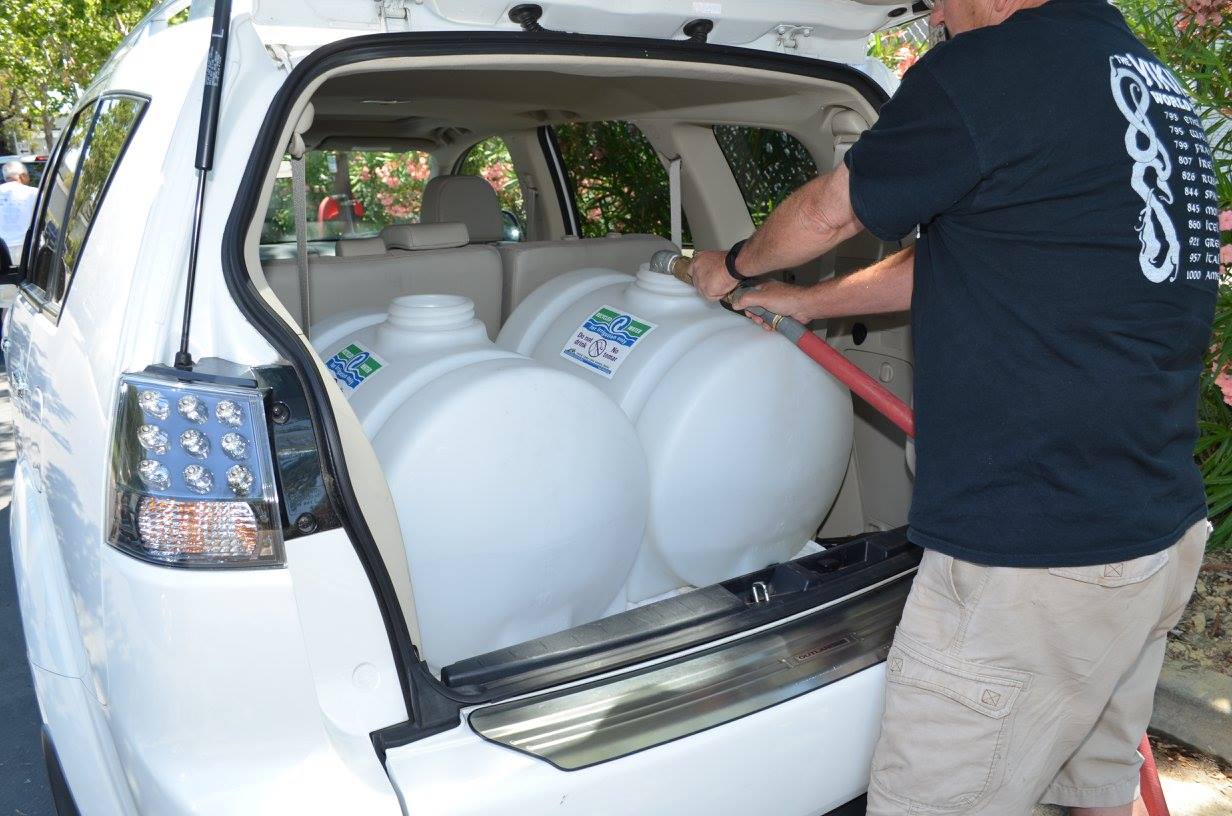
Leave a Reply